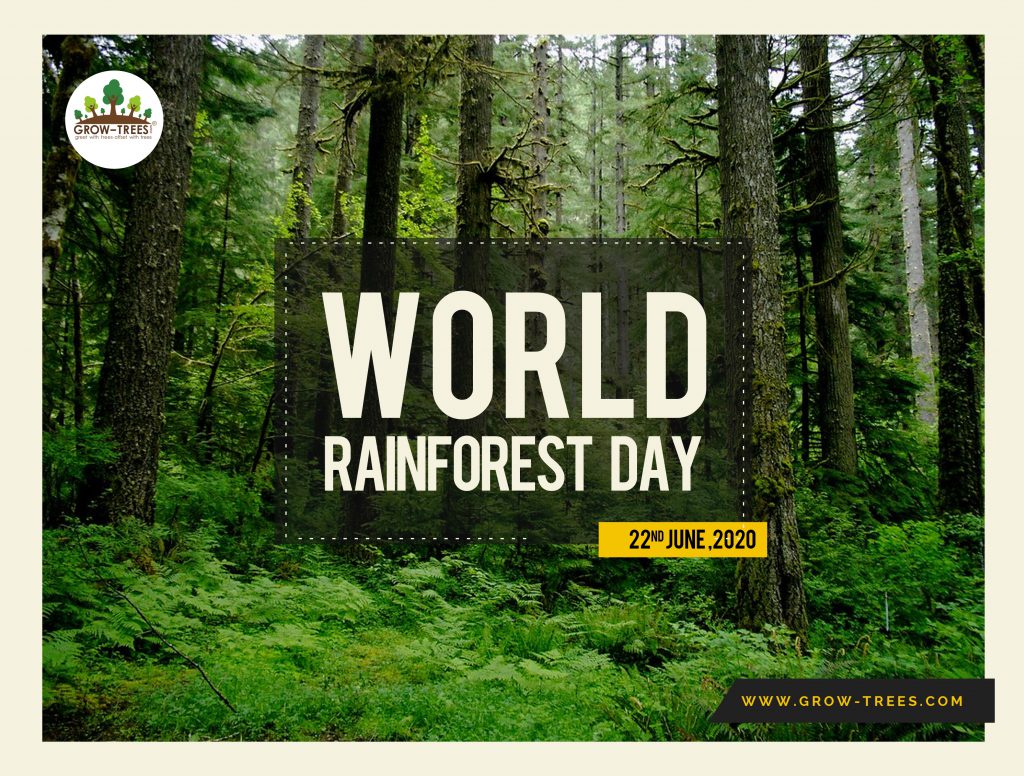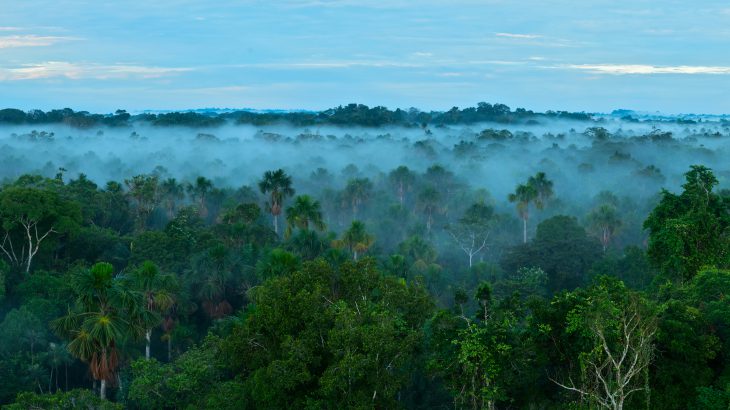We are celebrating the fourth annual “World Rainforest Day” on June 22nd, but why is it important for us?
It is rightly said, “No one will protect what they don’t care about, and no one will care about what they have never experienced”. One has the tendency to ignore the importance of something unless educated about it, even if their very lives depend on it. And therefore, it seems essential to educate the world about the role and importance of rainforests in our lives.
Green cover of the Earth that receives 175cm-200cm or more rainfall and is accompanied by warmer climate qualifies as the rainforest. They are said to have such dense vegetation that only about 5% of the sunlight reaches the bottom and rainfall takes nearly 10 minutes to touch the ground. All continents of the world house them, broadly dividing into two types: Tropical and Temperate rainforests, depending on the region that they fall in. Rainforests regulate the water cycle through the process of transpiration; they handle the movement of rainwater to underground water reserves. The biggest canopy trees found here release approximately 760 liters of water annually.
Experts say that Amazon Rainforest alone provides the world with 15% of freshwater. Rainforests supply the world with 28% of the world’s oxygen, justifying being called the lungs of the planet. Biodiversity of the tropical rainforests is so vast that two-thirds of the vegetative species of the world are found here; one can have an idea about this with the fact that an area of two football fields of rainforests may have more than 400 species of trees.
With less than 6% of Earth’s total area, rainforests inhabit more than 50 % of the animal species. 25% of all the most vital life-saving medicines produced receive their essential ingredients from the rainforests. Rainforests, also known as “jewels of earth” or “world’s largest pharmacy” are very crucial for the sustainability of life on earth.

Rainforests are spread all over the world and have found their ground in India too. They can be found in three regions of our country:
- Western Ghats- Sprawled across from southwest Maharashtra to Karnataka and Kerala to Tamil Nadu, these biological storehouses boast of over 1,100 species of animals and aquatic life. This evergreen forest cover inhabits a large population of elephants, tigers, gaurs, and an innumerable variety of medicinal plants.
- Andaman and Nicobar Islands- Filled with more the 84% of forest cover, Andaman and Nicobar is a suitable territory for blooming of these versatile forests. These islands are isolated from the Indian mainland and therefore, are enabled to populate species that are endemic and are only found in this region. With over 2,200 varieties of flora, these forests have a mixed range of India, Myanmar, and Malaysian plant life.
- North Eastern Rainforests- Uncontaminated with urbanization and civilization unlike the Western Ghats, these forests are home to the largest population of one-horned rhinos. These moist deciduous forests are found at a height of approx 900 meters across the Meghalaya, Nagaland, and Manipur, Assam, and in some parts of Arunachal Pradesh. Brahmaputra valley which extends over to West Bengal is home to a large tiger population.
Rainforests are very crucial for our survival, along with the supply of essential elements like oxygen, fresh water, medicinal plants, etc.; the livelihood of 1 out of 4 people depends on these forests. Hardwoods like mahogany, teak help people make fortune out of them, however, this has proven to work against these forests. Humans have been encouraged to conduct massive deforestation for monetary purposes, getting support from several national governments as well. 6 million hectares of forests are cut down every year, and with that rate, they are going to vanish in the next 100 years.
As poorer countries want to repay their debts, rainforests are being exploited in name of timber, mining, agricultural lands, etc. When a large tree in forests is cut down it mashes up to 17 smaller trees blooming under it. A recent development in biofuel and vegetable oils is also harming these forests at an unprecedented rate. An increase in palm oil farming has also contributed to the cause, leading to further deforestation.
Reports say that every year rainforests of the size of Bangladesh are destroyed, and every second a rainforest of the size of a football field is ruined.
The current scenario of the COVID pandemic provides us with an opportunity to stop and restore deforestation. As pollution levels are low currently, so are the requirements. We should utilize this time to understand the nature of these biological boons and extend our full support to the organizations which are working on their toes to save these essential wonders of nature.

amazing Post …